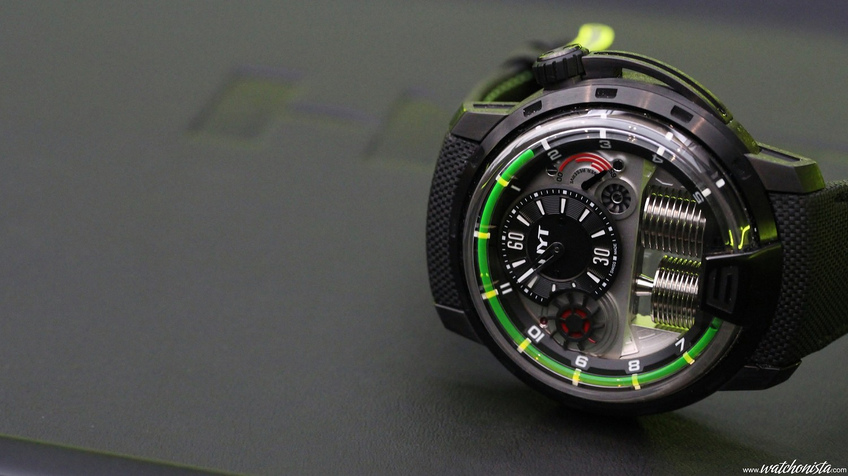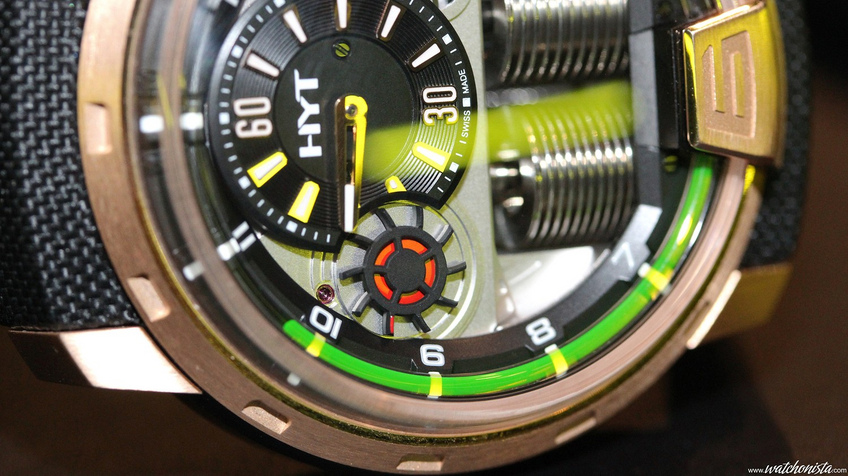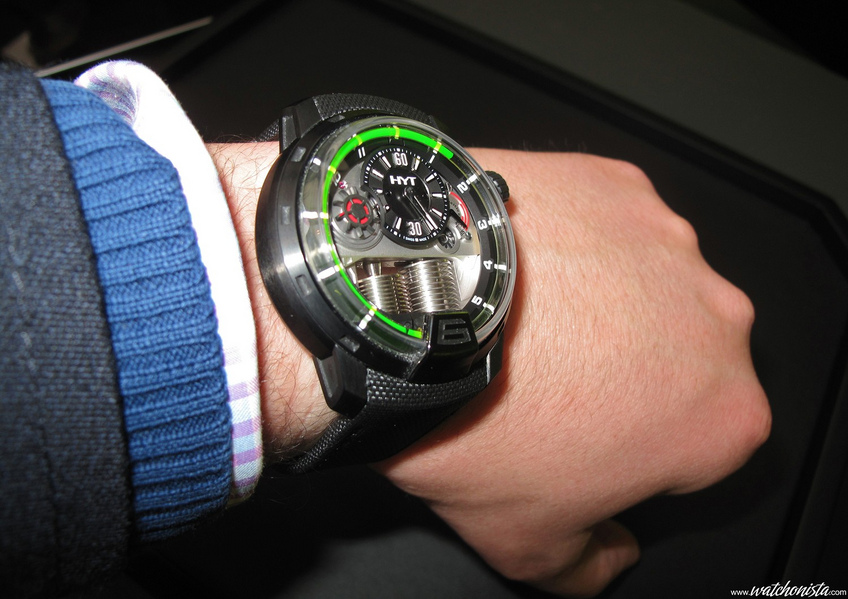

5 expensive watches at Baselworld 2012
The counterpart of the article about the "low-cost" watches, or at least affordable, is the topic on the expensive watches. After the reality comes the dream:
Opus XII
Always further. Always stronger. From great complications to groundbreaking technical feats, year after year, the Opus has become Baselworld's highlight.
This Opus XII, prepared behind closed doors, did not forget the recipe of its first successes. Little known watchmaker, ground-breaking display complication, pioneering designer, all the ingredients are put together.
The white gold watch is 46mm across, it is massive, in a straight line with the "Histoires de Tourbillon" or the Opus from Harry Winston.
The hour is displayed through 26 hands! The 27th displays the Power reserve. The other 26 are laid out as follows:
One small seconds hand on a 360° railway, classic.
One retrograde hand advances and flies back along a 135° sector every 5 minutes, almost classic.
One pair of hands for each one of the twelve hour indexes. The main minutes hand and the hour hand both feature two faces, one blued and one steel.
Every 5 minutes, the minutes hand rotates and shows its blued face (PVD).
While making a lot of noise; it is very much appreciated at W., one could almost think it is a type of chime that rings every 5 minutes.
Of course, the previous minutes hand rotates back to its steel face. The hour hand (shorter as per convention) follows the same cycle.
But above all, at each change of the hour, all the hour hands rotate successively in order to materialize the flowing of time (while producing a rather impressive humming).
With a spectacular complication, and a cybernetic look, the Opus is priced at about 200,000€, and the 120 copies will be sold very quickly.

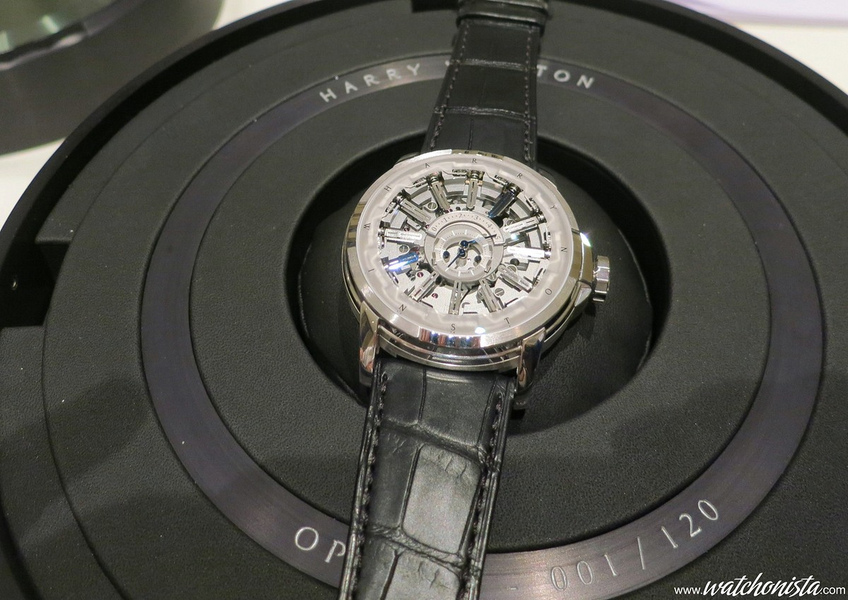
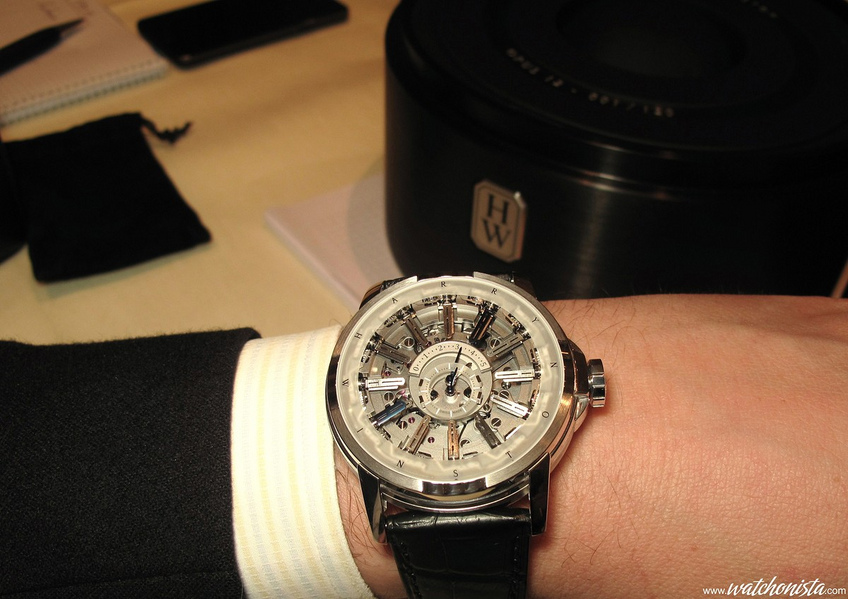
DB28st
Pierre Jacques, the CEO, took over De Bethune's marketing department at the beginning of 2011.
If David Zanetta still leads the product department and Denis Flageollet runs the movements design office, Pierre Jacques made more practical choices regarding the product ranges.
The DB28 is a perfect example, it is a combination of the recent successes of De Bethune.
It is a hybrid watch, which reuses the DB25 Dead-beat Tourbillon's movement, and the DB28's famous case.
The DB28st's DB2119 movement is regulated by a high frequency tourbillon (36000 v/h), a platinum/silicon balance wheel and is driven by a double barrel with a 4-day power reserve.
Compared with the DB25t, the DB28st's caliber was "turned-over" to make the mechanism visible on the watch's upper side. A bridge was added to complement the work.
The combined motion of the super-fast tourbillon and of the dead-beat second's extra wheel (a hand that jumps once a second, instead of moving continuously) is of course impressive.
Regarding the case, it is still the DB28's, the titanium "Best-seller" (relatively to De Bethune's very modest scale), with its mobile lugs.
It is one of the most comfortable and impressive cases in the watchmaking industry.
The watch also costs a trifling 200,000€; it is expensive, it is the price for the dream, outrageous but justified, if one takes into account De Bethune's absolute excellence.

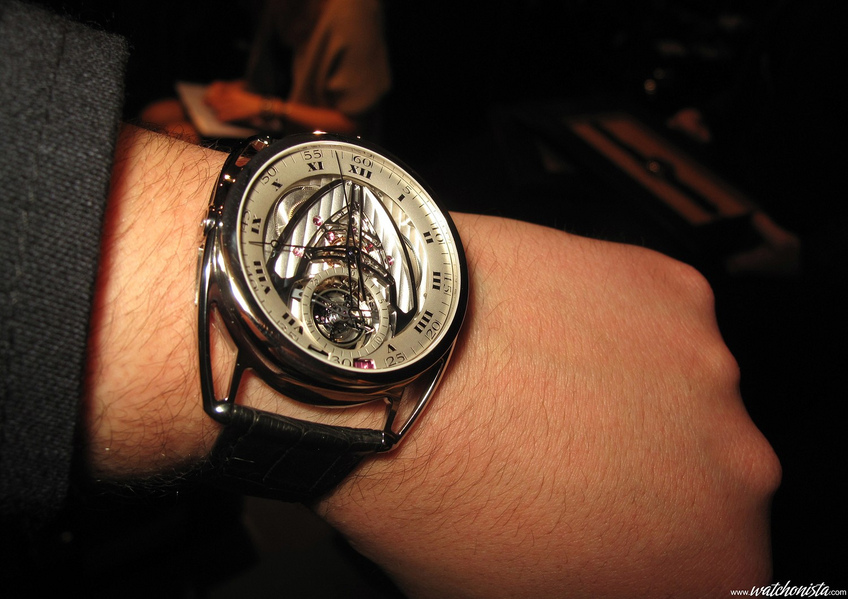
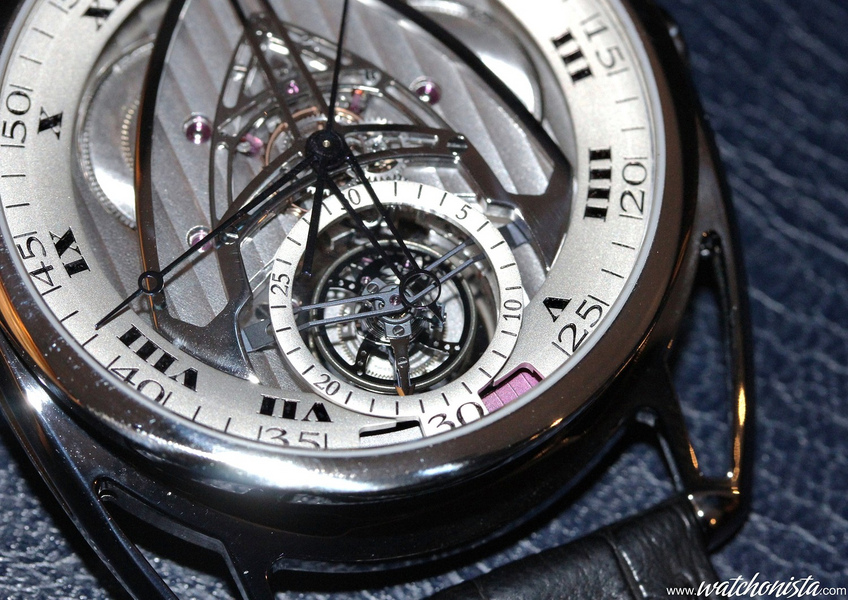
Tag Mikrogirder 1/10000
The speed of light. It looks like this is the goal Jean-Claude Babin & Guy Sémon are trying to reach; for it is true that during Baselworld 2011, they began chasing very high speeds, a pursuit that seems to lead them towards the realm of outer space.
Following the Tag Heuer's chronographs accurate down to 1/100th, then to 1/1000th and finally to 1/2000th of a second, the brand presents a chronograph able to divide the time down to 1/10,000th of a second.
In real life, it is as astonishing as on the paper: the hand spins far beyond the speeds that a human eye can process, and only a strong humming reveals its rotation.
The case and the dial are almost conventional, as the sober design, inspired by the vintage Tags, gives way to the technical feat.
The price of this prototype has not yet been disclosed. But since the 1/1000th Tag was sold for about 100,000€, the new Mikrogirder, which features a different regulating organ and a 10 fold higher frequency, could probably cost between 100k€ and 200k€.
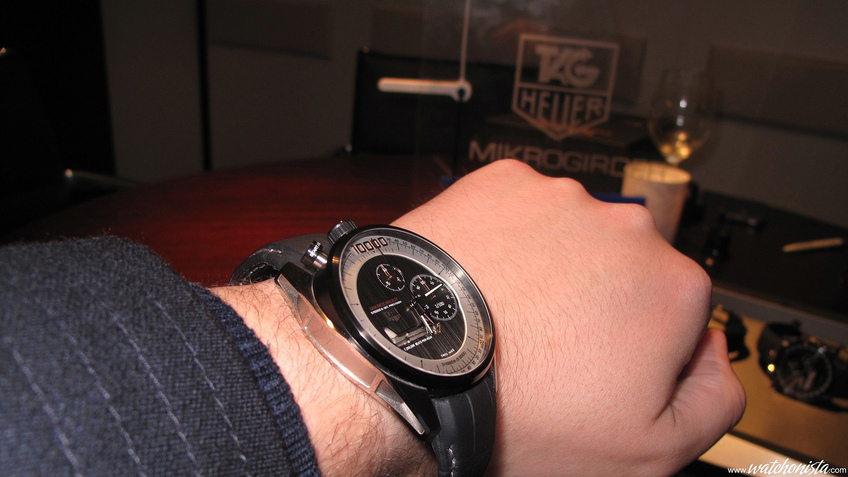
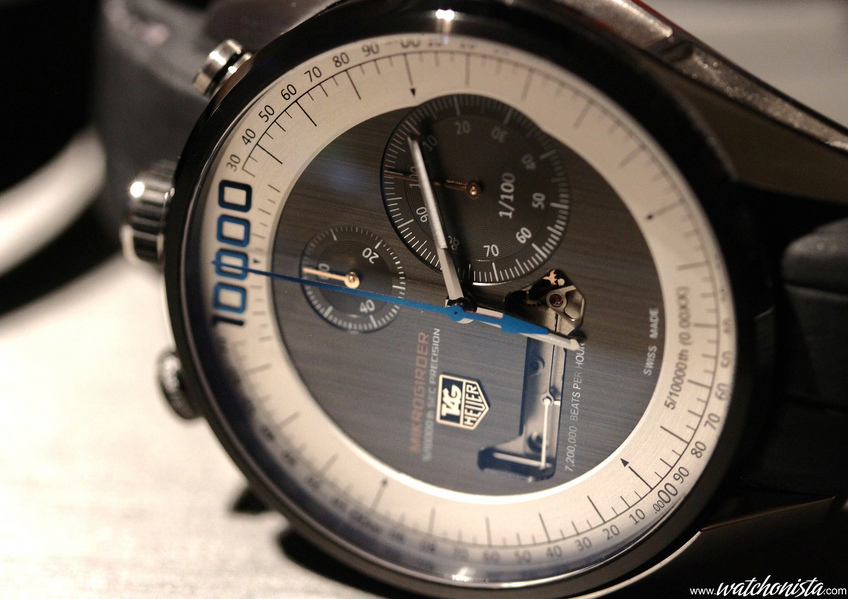
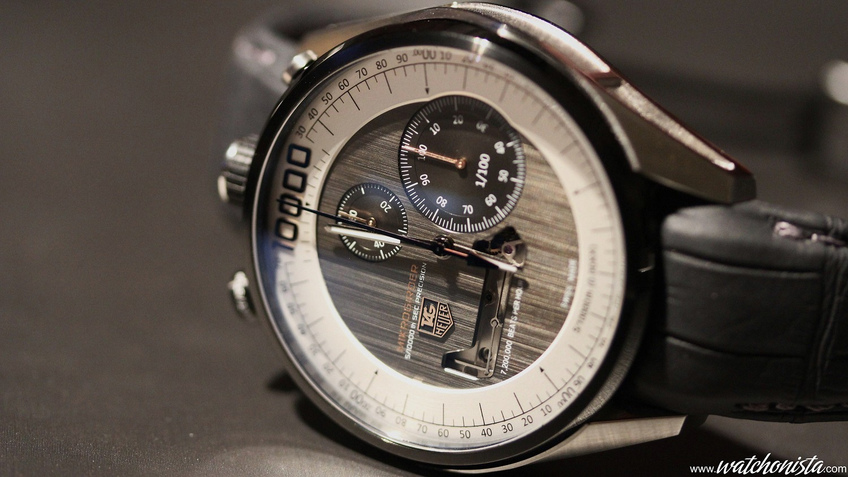
4N
The jumping hour digital display of François Quentin's watch is the outcome of several years of research.
"Jumping hour digital display" means that all the disks leap from number to number, to display the hour digitally in the central rectangle.
When Journe's Vagabonde relied on a minimal volume and Lange went for mechanical complexity, 4N opted for the reliability, with a bulky system.
The system imagined by François was developed by Renaud & Papi, which is an extra proof of reliability.
On the wrist, it is a true independent's watch, fancy, pulsating; the leaps of the disks are as impressive, or even more impressive than those of Lange's Zeitwerk. But the watch has this crazy look that makes the independent watchmaking commentators happy. Despite its extravagant dimensions (about 51,5 mm* 37mm* 15,5mm), it remains wearable and even comfortable.
The price of innovation? 160,000€.
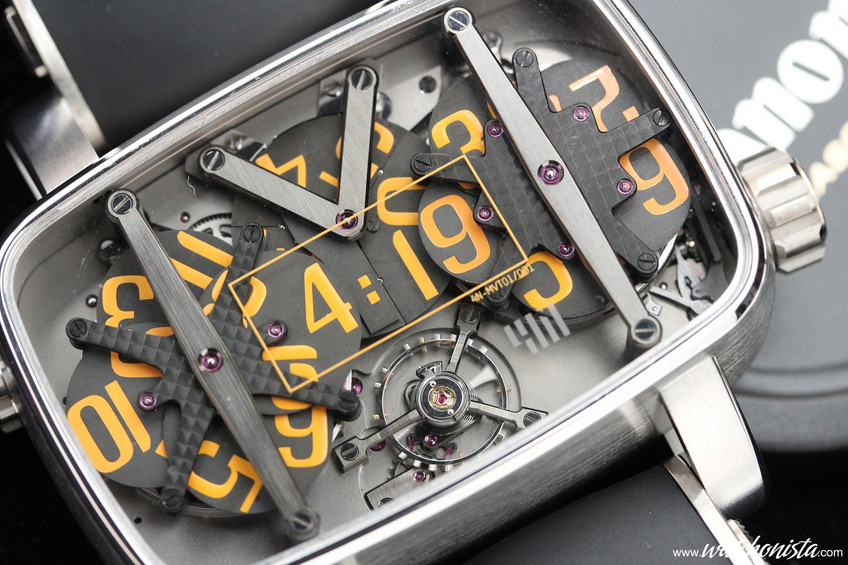
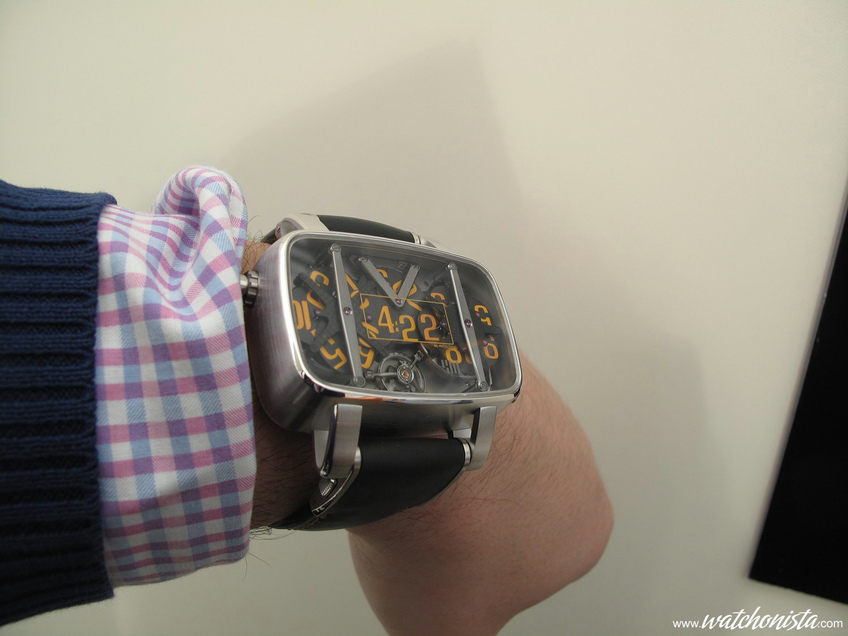
HYT
The most affordable watch in this article, is paradoxically the one over which most fluorescent ink has been spilled throughout Baselworld 2012.
There is a very good reason for that: the watch takes the opposite line from one of the watchmaker's biggest fear, as it reinterprets the watchmaking's prehistory: the Clepsydra. It is more than back to the roots, it is back to the water spring. Indeed, watchmakers worked for decades to improve the cases' waterproofing. Today, with the H1, HYT makes a liquid the watch's intrinsic component.
The hour is displayed by a fluorescent liquid, through a transparent tube (I should say "capillary", it sounds smarter). This fluid is confined by another colorless liquid.
The complication created by Jean-François Mojon, is driven by a complex system of blowers linked to the movement .
The watch feels great on the wrist, and appears to be 44mm, when it is actually 48mm; the most impressive phase is setting the time, when the green liquid rushes through the capillary.
As it stands half way between the clepsydra and a hydraulic system, the watch is unquestionably the most innovative product of the year, sold for about 40,000€, "only".
